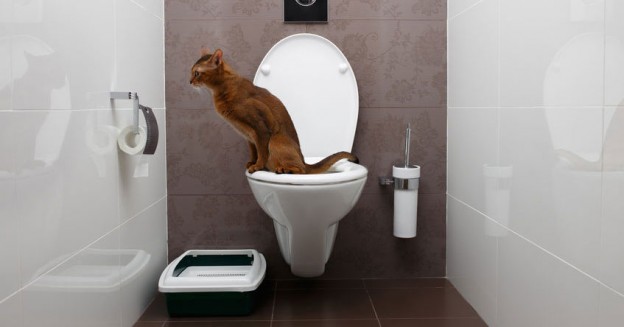Why You Should Never Flush Cat Poop Down Your Toilet - Important Information
Why You Should Never Flush Cat Poop Down Your Toilet - Important Information
Blog Article
They are making a few good annotation regarding Can You Flush Cat Poo or Litter Down the Toilet? overall in this content following next.

Introduction
As pet cat proprietors, it's essential to bear in mind how we throw away our feline close friends' waste. While it may appear hassle-free to purge cat poop down the toilet, this practice can have destructive consequences for both the environment and human health.
Environmental Impact
Flushing cat poop introduces hazardous microorganisms and parasites right into the supply of water, positioning a significant threat to aquatic ecological communities. These pollutants can adversely affect aquatic life and concession water quality.
Health and wellness Risks
Along with environmental worries, flushing feline waste can additionally pose health and wellness threats to humans. Feline feces might have Toxoplasma gondii, a bloodsucker that can cause toxoplasmosis-- a potentially serious health problem, especially for expectant ladies and individuals with weakened immune systems.
Alternatives to Flushing
Luckily, there are safer and extra liable methods to take care of cat poop. Take into consideration the following options:
1. Scoop and Dispose in Trash
The most typical method of throwing away cat poop is to scoop it into a biodegradable bag and toss it in the garbage. Make certain to make use of a devoted litter scoop and deal with the waste promptly.
2. Usage Biodegradable Litter
Choose eco-friendly cat litter made from materials such as corn or wheat. These trashes are environmentally friendly and can be securely disposed of in the trash.
3. Hide in the Yard
If you have a lawn, consider burying feline waste in a marked area far from vegetable gardens and water sources. Make sure to dig deep enough to avoid contamination of groundwater.
4. Set Up a Pet Waste Disposal System
Buy a pet dog waste disposal system particularly created for pet cat waste. These systems use enzymes to break down the waste, reducing odor and ecological effect.
Conclusion
Responsible family pet possession expands beyond offering food and sanctuary-- it likewise involves proper waste management. By refraining from flushing pet cat poop down the toilet and opting for different disposal methods, we can decrease our ecological footprint and protect human wellness.
Why Can’t I Flush Cat Poop?
It Spreads a Parasite
Cats are frequently infected with a parasite called toxoplasma gondii. The parasite causes an infection called toxoplasmosis. It is usually harmless to cats. The parasite only uses cat poop as a host for its eggs. Otherwise, the cat’s immune system usually keeps the infection at low enough levels to maintain its own health. But it does not stop the develop of eggs. These eggs are tiny and surprisingly tough. They may survive for a year before they begin to grow. But that’s the problem.
Our wastewater system is not designed to deal with toxoplasmosis eggs. Instead, most eggs will flush from your toilet into sewers and wastewater management plants. After the sewage is treated for many other harmful things in it, it is typically released into local rivers, lakes, or oceans. Here, the toxoplasmosis eggs can find new hosts, including starfish, crabs, otters, and many other wildlife. For many, this is a significant risk to their health. Toxoplasmosis can also end up infecting water sources that are important for agriculture, which means our deer, pigs, and sheep can get infected too.
Is There Risk to Humans?
There can be a risk to human life from flushing cat poop down the toilet. If you do so, the parasites from your cat’s poop can end up in shellfish, game animals, or livestock. If this meat is then served raw or undercooked, the people who eat it can get sick.
In fact, according to the CDC, 40 million people in the United States are infected with toxoplasma gondii. They get it from exposure to infected seafood, or from some kind of cat poop contamination, like drinking from a stream that is contaminated or touching anything that has come into contact with cat poop. That includes just cleaning a cat litter box.
Most people who get infected with these parasites will not develop any symptoms. However, for pregnant women or for those with compromised immune systems, the parasite can cause severe health problems.
How to Handle Cat Poop
The best way to handle cat poop is actually to clean the box more often. The eggs that the parasite sheds will not become active until one to five days after the cat poops. That means that if you clean daily, you’re much less likely to come into direct contact with infectious eggs.
That said, always dispose of cat poop in the garbage and not down the toilet. Wash your hands before and after you clean the litter box, and bring the bag of poop right outside to your garbage bins.
https://trenchlesssolutionsusa.com/why-cant-i-flush-cat-poop/

As an enthusiastic person who reads on How to Dispose of Cat Poop and Litter Without Plastic Bags, I figured sharing that editorial was important. Liked our piece? Please share it. Let others discover it. Thanks a lot for taking the time to read it.
Schedule Report this page